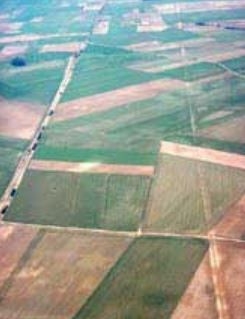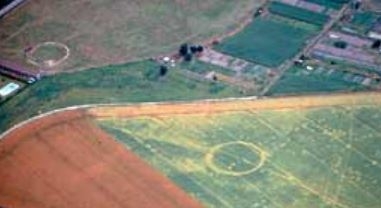- Home
- Clues on the ground
- Pitfalls and confusions
- Beware of similar forms
It's not just Roman roads that are straight…Beuvraignes (Somme).
To the left, a abandoned railway line; to the right, an old pipeline! Beuvraignes (Somme).
Landscape anomalies (topographical clues) — these "plant metamorphoses of the past" — have been the source of any number of errors, especially when they are studied solely on the basis of aerial views, without on-the-ground verification and the support of archival material (land registries, old and new maps, etc.). Yes, Roman roads are straight, and can be detected by the alignment of roads, shrubs and hedges, but we should not confuse them with pipelines and other buried drainage systems, or with old railway tracks that have covered over with vegetation. (Although in a certain sense, this too is archaeology…)
In the same way, not all orthogonal structures are Roman in origin. There is an amusing fad for seeing centuriations everywhere. Urban or agricultural land allotments can be of more recent origin. Charlemagne, Napoleon I, and above all Mussolini (who saw himself as a Roman emperor) were attracted to this return to Antiquity.
We even know of a photo-interpreter who thought he had discovered a submerged seaside Roman village — when in fact it was an abandoned oyster bed!
Former station and train line abandoned circa 1950, and partial view of a Gallo-Roman villa at Fignières (Somme).
Former station and train line abandoned circa 1950, and partial view of a Gallo-Roman villa at Fignières (Somme).
The circle in the background is a modern ring used to train horses. In the background, the circle and its necropolis are protohistoric. Fouilloy (Somme).
The circle in the background is a modern ring used to train horses. In the background, the circle and its necropolis are protohistoric. Fouilloy (Somme).




